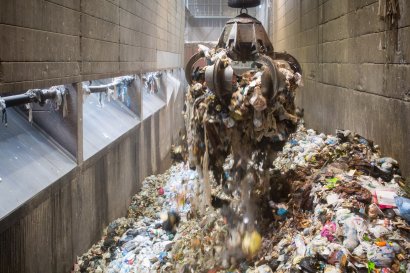The circular economy means that we need to change our thinking from the ‘buy-use-throw away’ model to a more sustainable culture. The life cycle of a product needs to be planned from the manufacturing until the end of its use, and products should to stay in circulation rather than thrown away. Waste management is naturally a very important part of the circular economy.
The European Parliament has just approved the so-called Waste Package at its plenary in Strasbourg. “With the new targets for recycling and landfilling, we have clearly pointed the way to the future: our raw materials must be kept in circulation”, said the EPP Group negotiator for the Waste Package, Karl-Heinz Florenz MEP.
“We have substantially improved environmental and climate protection, by reducing landfill amongst others, and at the same time we have put together an economic package for 80,000 potential new jobs and billions in economic growth. Competitiveness and sustainable growth are two sides of the same coin. Europe cannot afford to lose 2.5 billion tons of raw materials due to miserable waste management, especially because of rising raw material costs”, he said.
“Clear, harmonised definitions and a consistent calculation method for the recycling targets were a central concern for me. Only if all Member countries use the same method, can the recycling results be comparable. Currently, most of them use the method that best suits them – a big loophole that we managed to close”, Florenz pointed out.
Background
The Waste Package consists of four Reports: the Waste Framework Directive, the Packaging and Packaging Waste Directive, the Landfill Directive as well as the End-Of-Life Vehicles, Batteries and Accumulators and Waste Batteries and Waste Electrical and Electronic Equipment Directive.
The Waste Package sets clear targets for the reduction of waste:
Municipal waste: recycled or prepared for re-use: 55% by 2025, 60% by 2030 and 65% by 2035 (with a derogation of five years for 10 Member States);
Member States will have to set up a separate collection for textiles and hazardous waste from households by 2025 and ensure that bio-waste is collected separately by 2024;
Packaging materials: 65% recycling rate by 2025 and 70% by 2030 with additional material specific targets which encourage the use of recyclable and reusable packaging;
Landfilling limited to 10%, (with a derogation of five years for 10 Member States) although all waste suitable for recycling or other recovery, in particular in municipal waste, shall not be accepted in a landfill by 2030;
Food waste: non-binding 30% reduction by 2025 and 50% by 2050, with a review clause at the end of 2023 for a possible binding target by 2030.


